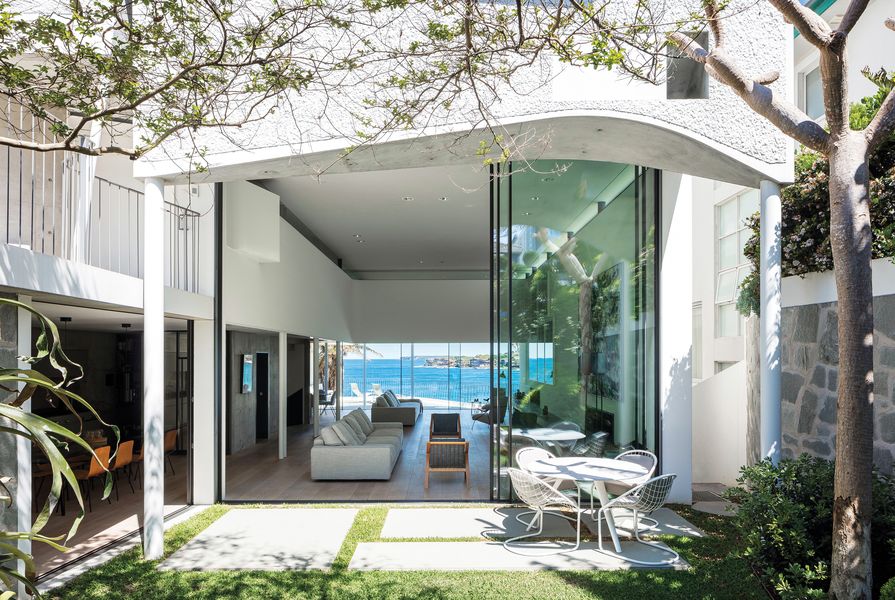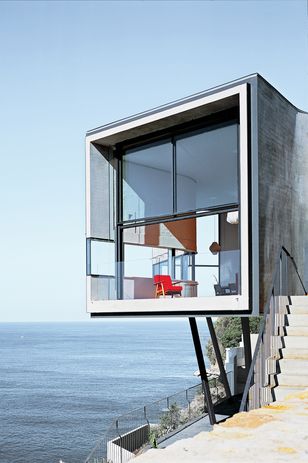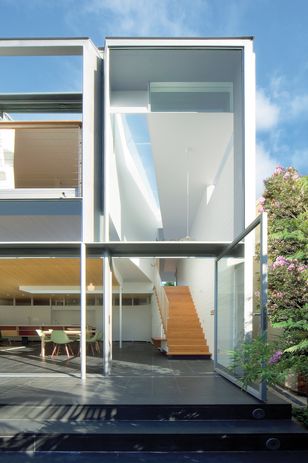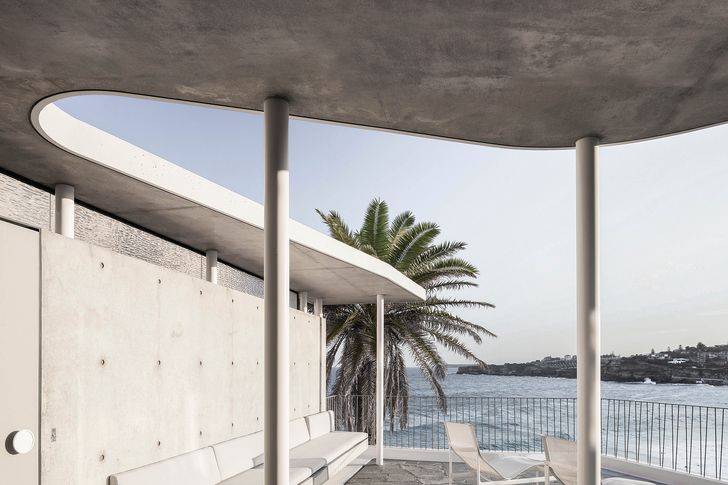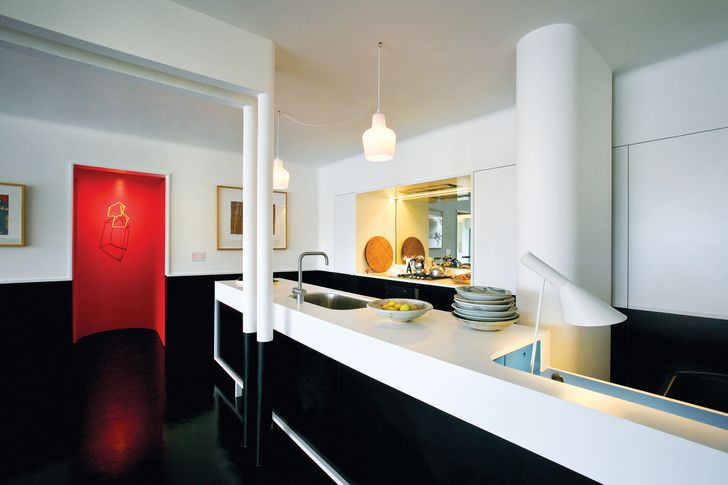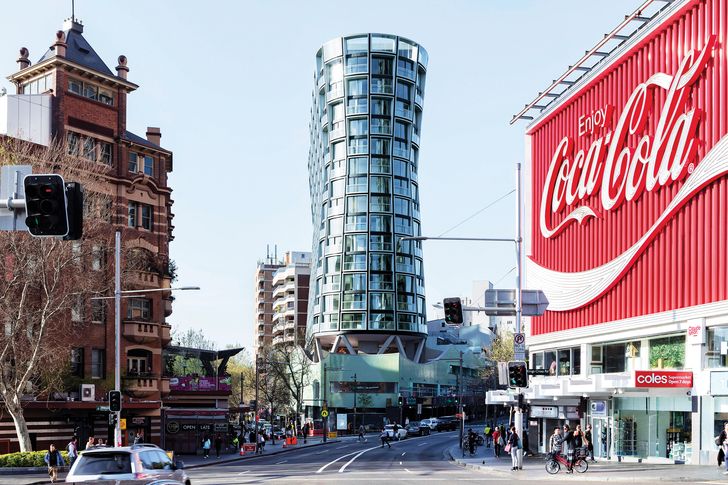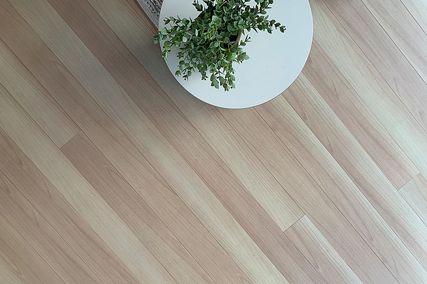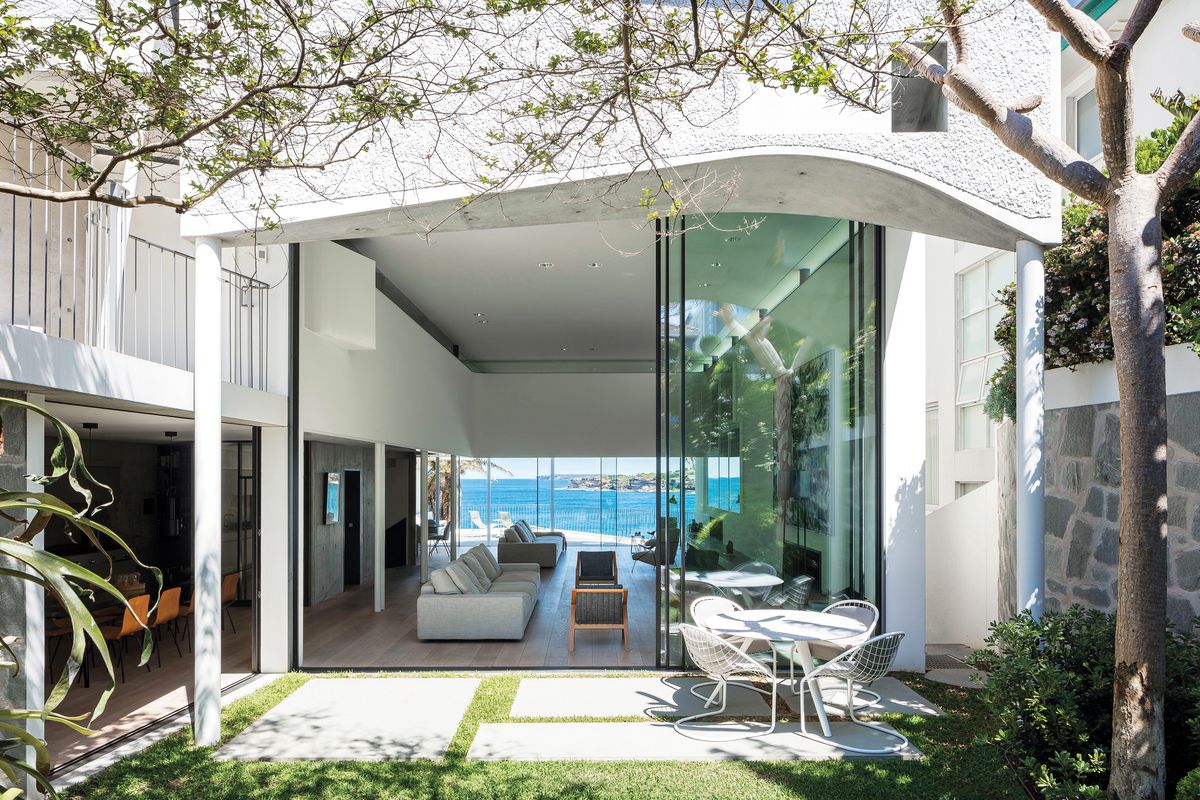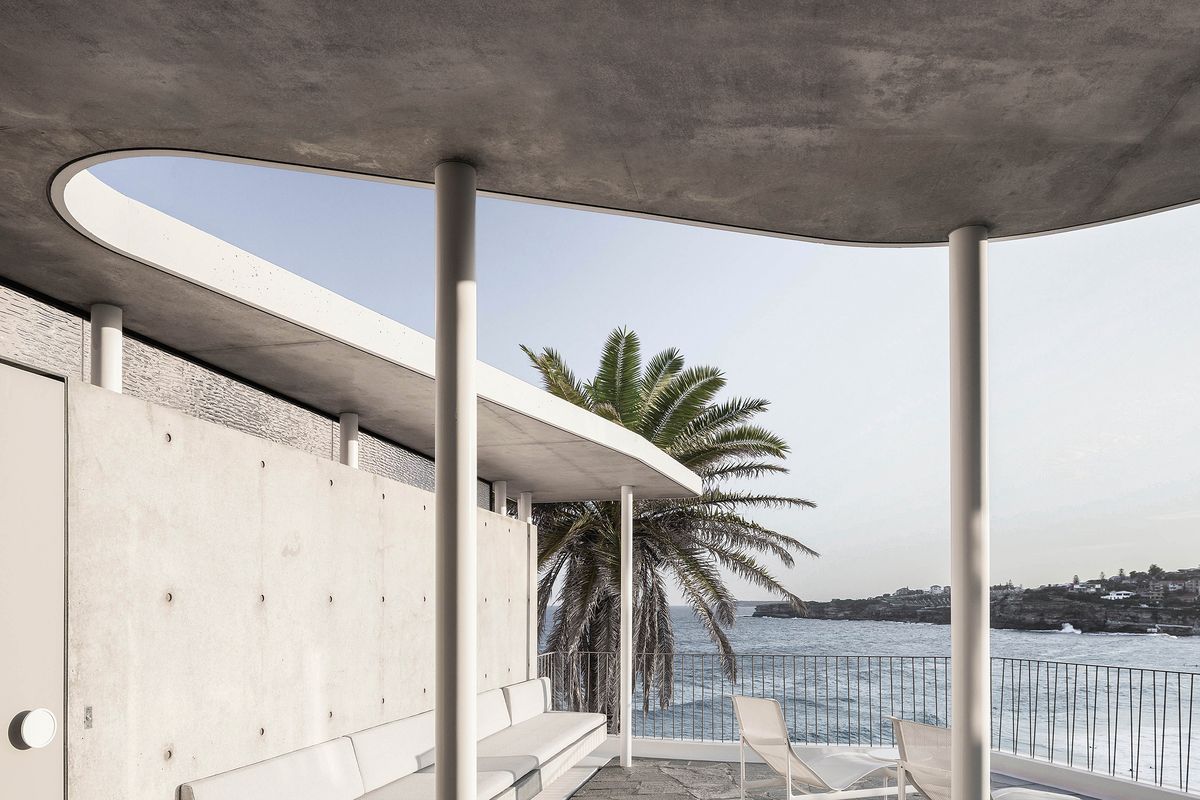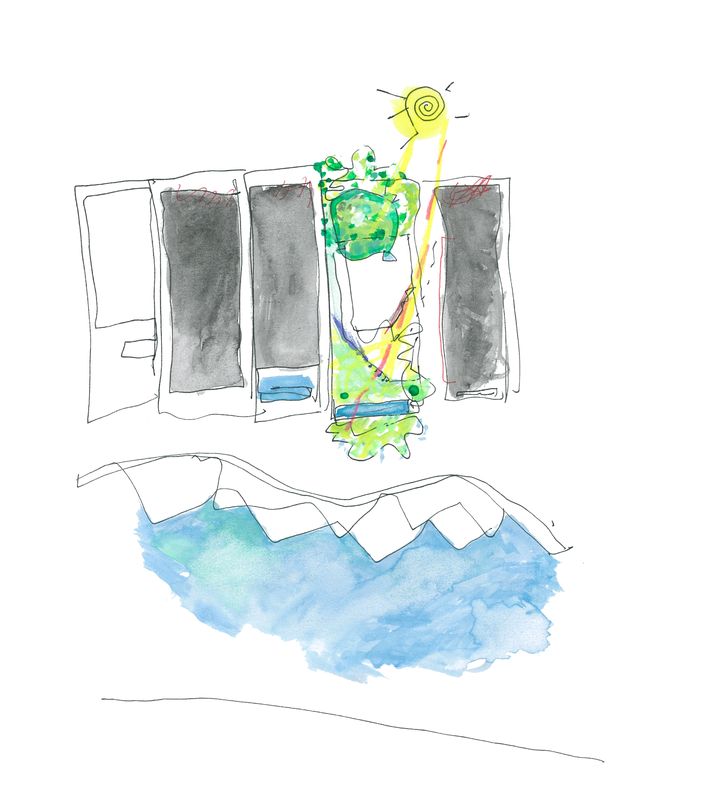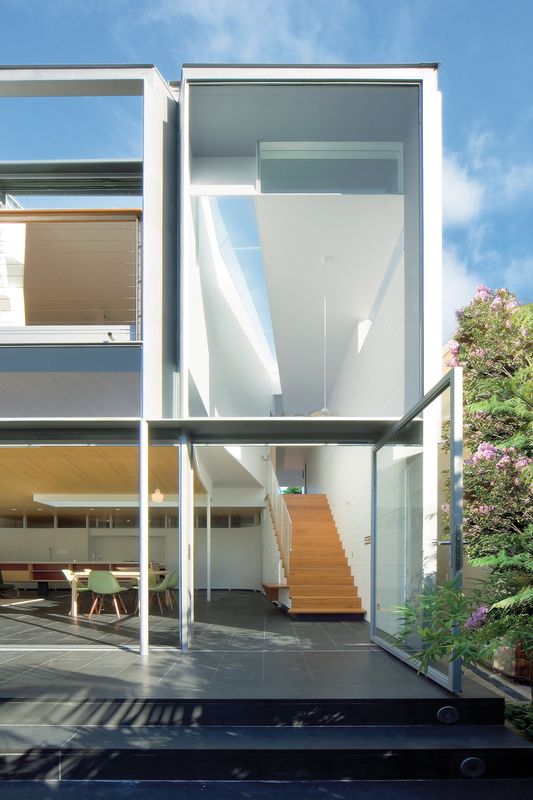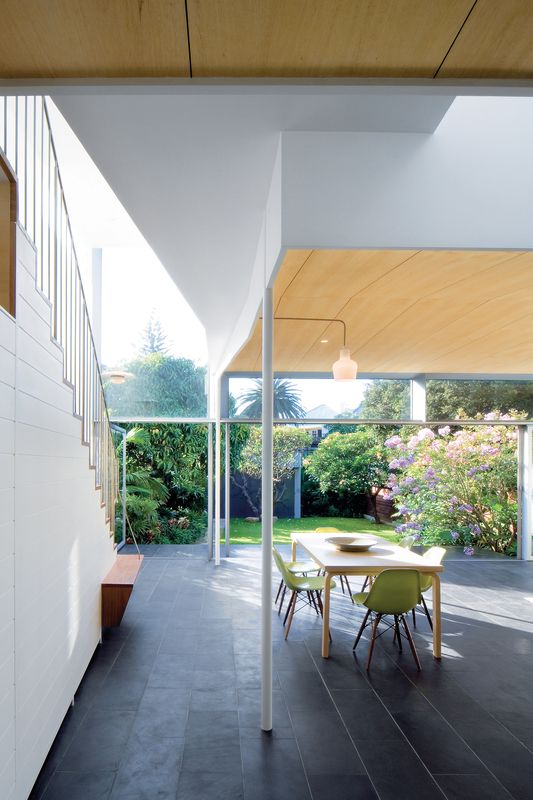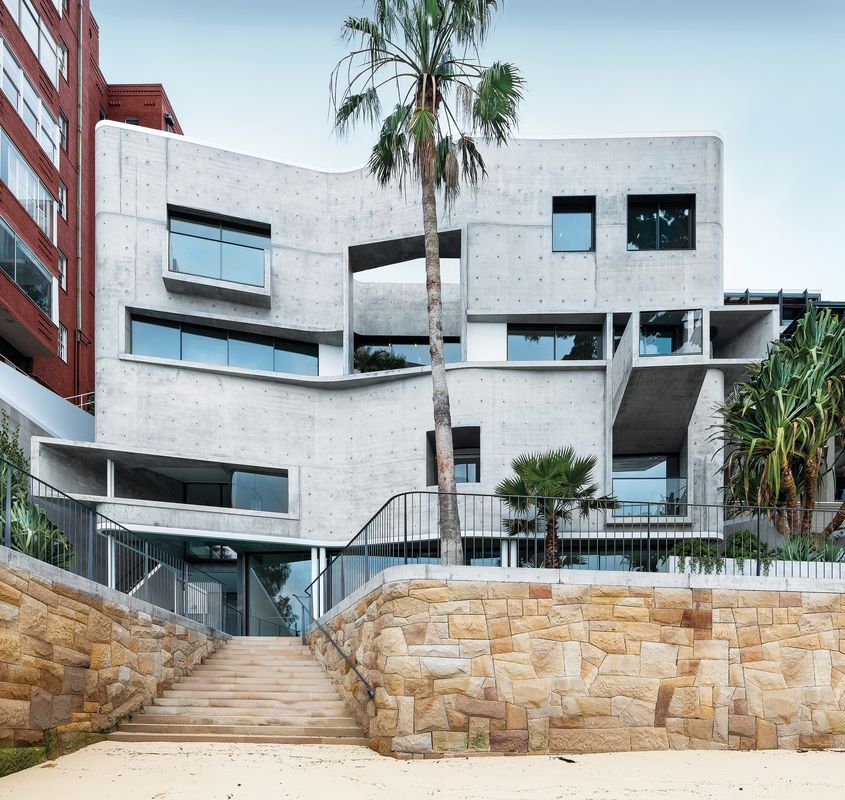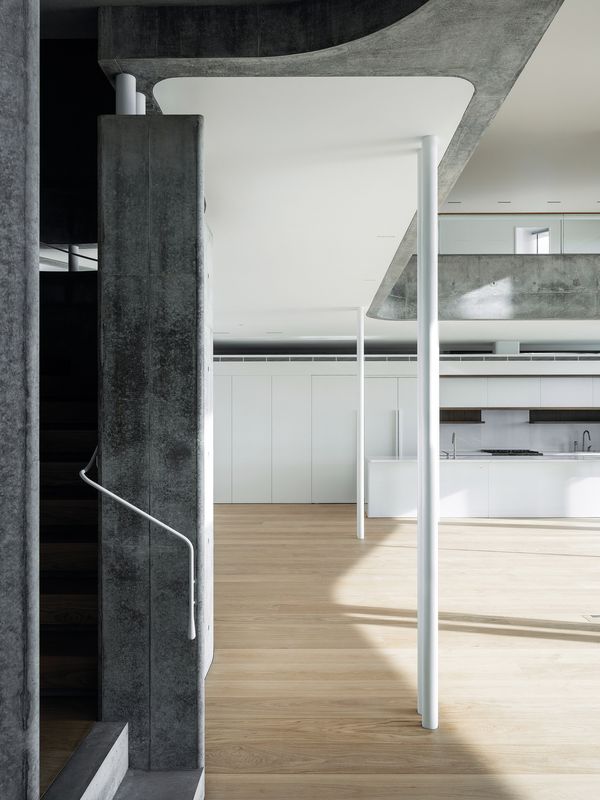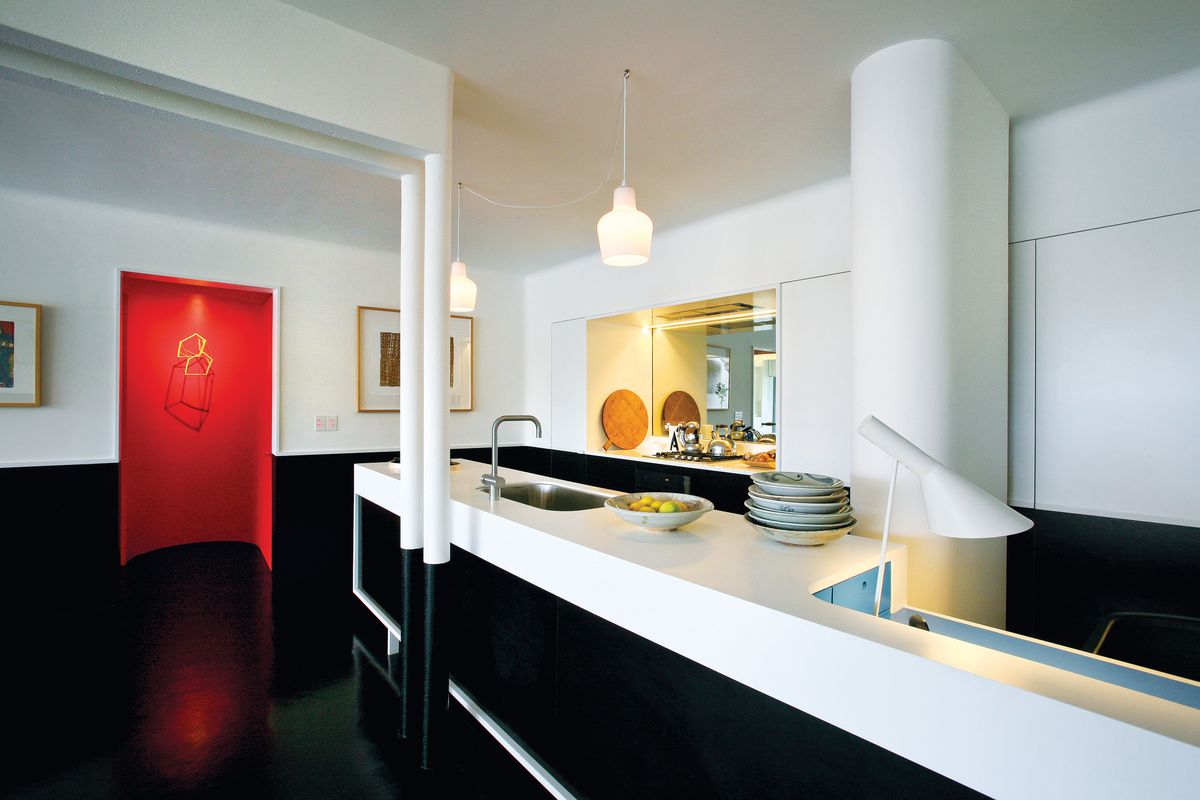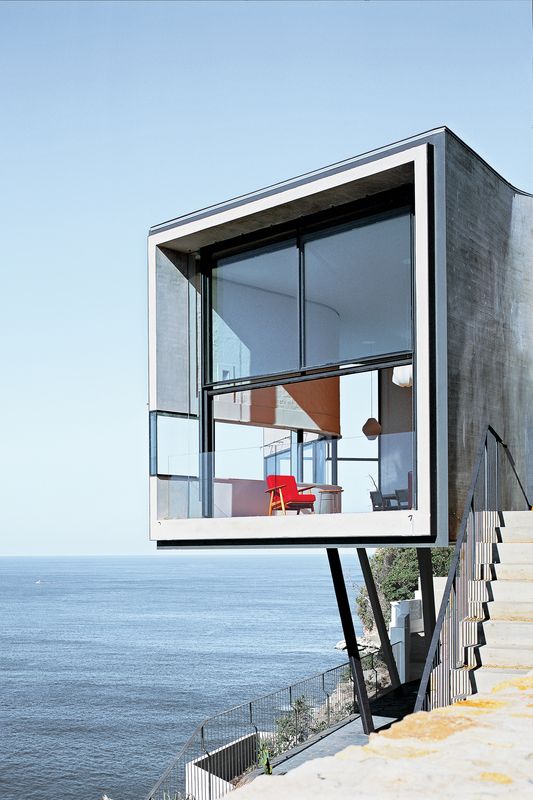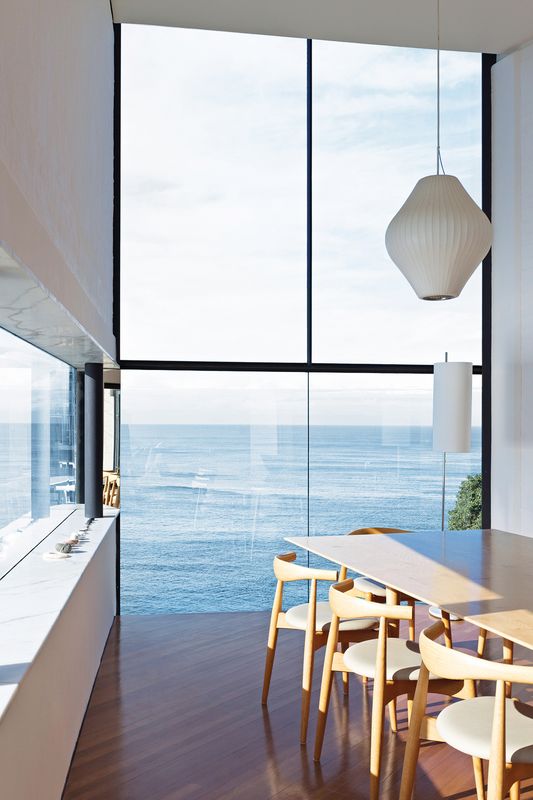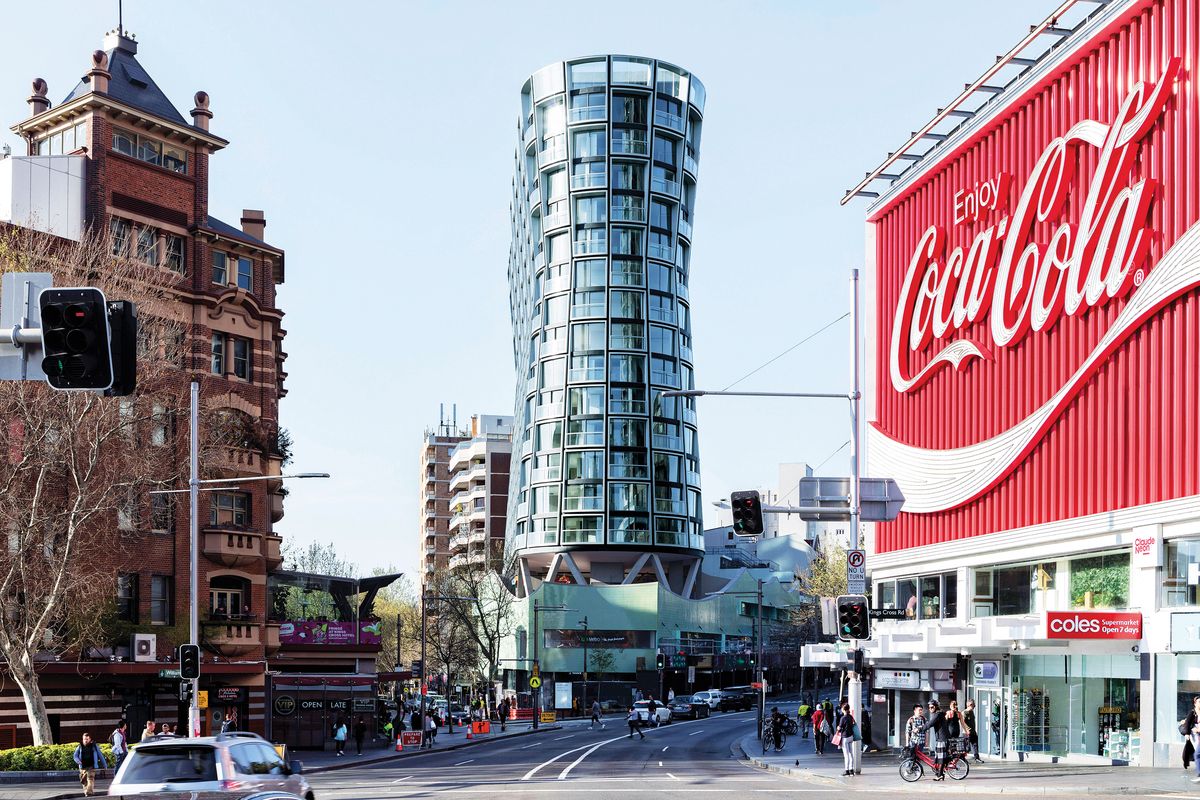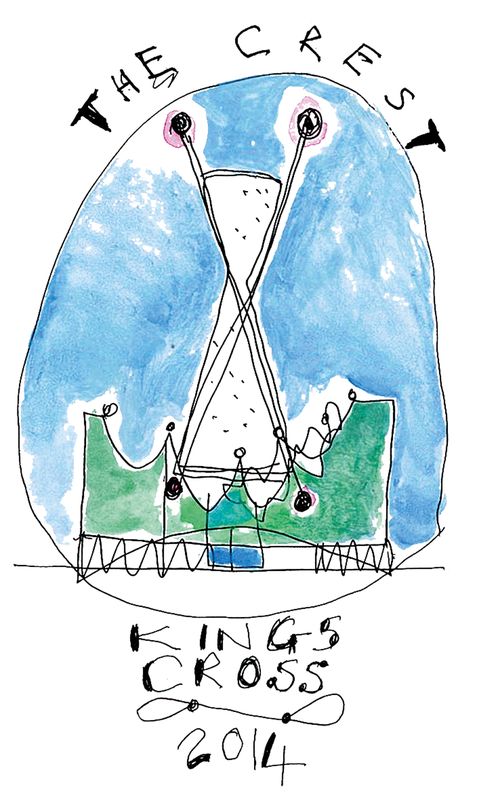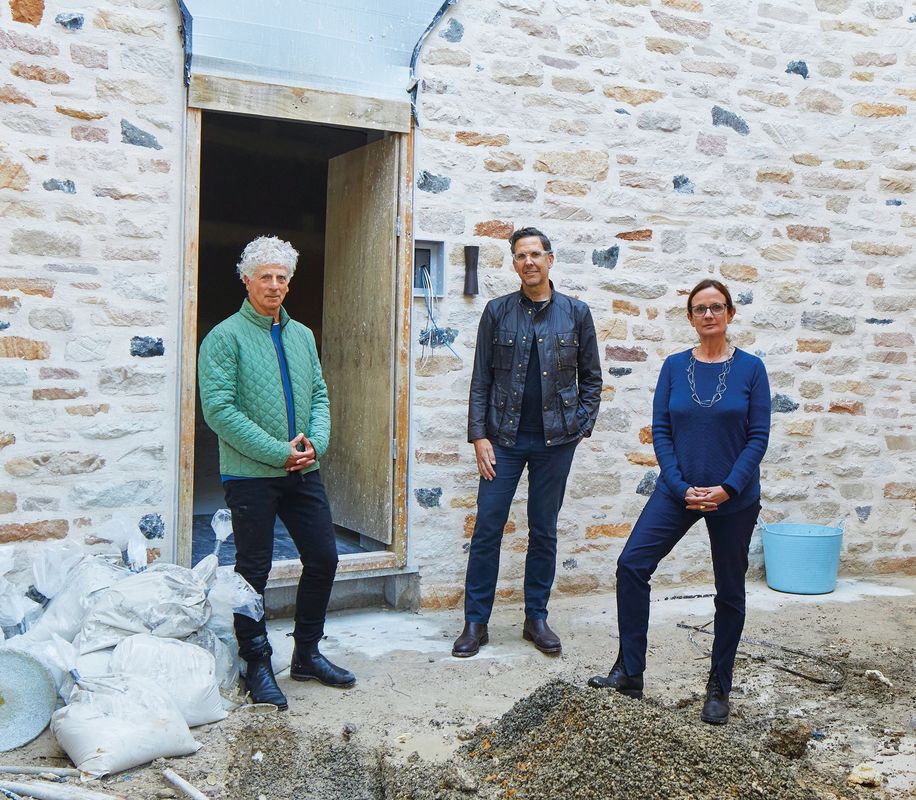There is a new Australian residential architecture that has evolved over the past decade that aptly responds to our climate, natural landscape and social context in playful, joyous and inventive ways. A select few highly influential Australian practices have driven this evolution of Australian design and Durbach Block Jaggers (DBJ) is one of them. DBJ was founded in 1987 by Neil Durbach, who was joined by Camilla Block as director in 1998 and by David Jaggers in 2007. There are subtle regional variations in this wave of residential architecture, but DBJ’s work stands apart from the clean straight lines seen in many contemporary Sydney houses. The practice’s pursuit of endless surprise results in complex geometries and overlapping spaces with highlights and deep shadows. DBJ aspires to create new pleasure in every space it designs.
The influence of Le Corbusier on DBJ’s work is palpable, with the uncompromising ambition to create buildings with what Neil terms “roundness,” or complexity and richness at all scales. Closer to home, Neil cites the influence of architect Hugh Buhrich. The German-born, Sydney-based architect “tangled together modernism with the Australian environment. [Buhrich’s own house] was a breakthrough in Australia,” explains Neil, who says Buhrich’s architecture was “surprising in a convincing way, always.” In DBJ’s houses, the spatial qualities imbue mundane daily routines with joy.
A “steady background with high notes and balance,” Camilla Block says of Holman House.
Image: Anthony Browell
The three practice directors are driven by a desire to redefine the architectural problem with every new project. Although the idea of a singular, central vision might at first be tempting, the notion, Neil says, eventually gets tiresome. This “newness” each time keeps the relatively consistent residential brief interesting. David explains, “The reality is that there is a sameness to residential briefs and the program is generally the same. Often, it’s about loosening up the client’s preconceptions of what their house might be.” Camilla adds, “The site is a physical thing with its own requirements – you can’t shoehorn every idea into every place. That’s part of an architect’s role – to see the place.”
House Sixel Miller in Watsons Bay is a delightfully modest example of how the site has determined the building’s form. The new house is on a tight, south-facing site within a heritage conservation area and was designed as a reinterpretation of the original weatherboard cottage. A light scoop and entry skylight shed natural light deep into the plan, while a strong connection is established with the serene garden. “We have a genuine interest in intimacy and the pleasure of connecting to garden, even if they are balconies or roof gardens. There is often a strange connection between a small place and the largeness of nature. I think that’s something we try to incorporate in all our work,” says Neil.
A light scoop drenches House Sixel Miller in warming sun.
Image: John Gollings
Similarly, at the Tamarama House, slices have been carved from the plan to allow for pockets of verdant green garden. With undeniably spectacular views of the ocean to the south, a more intimate, sunny, north-facing courtyard forms the second face to the building. Many of DBJ’s houses are privy to impressive views but, as Neil explains, “The view can throttle you – because that’s the obsession.” To avoid saturation by a singular perspective, DBJ thoughtfully edits or curates how these vistas are experienced. Upon entry to Tamarama, tiny openings give small glimpses of what lies ahead, never giving too much away.
Tamarama House (2014) by Durbach Block Jaggers.
Image: John Gollings
The choreography of the relationship and movement between rooms is a strong spatial concept. Borrowing from Le Corbusier, DBJ commonly embraces the concept of the promenade as an infinite circuit that links and orders all areas of the home. Careful not to design “bossy” buildings with prescribed functions, DBJ’s intention is to subtly guide or suggest movement and activities. Camilla describes the Holman House as having a “steady background with high notes and balance. There are sudden moments of mirror or stone, column or texture. And the rest is even-handed. There is no system to how things are done.” This intuitive approach to design is akin to finding balance within a painting or sculpture.
The poetry of overlapping spaces arises from pragmatic concerns. This is particularly evident in small spaces such as Balmain Apartment, an interior refurbishment of a 1980s apartment. Spaces are not insistent, but suggestive of a particular use. Where there was no option to physically create more space, DBJ has employed a dado line 900 millimetres above the floor to create contrast between light and dark, and thereby increase the perceived height of the apartment. Responding to the client’s work with Australian native birds, bold colour has playfully been applied to add texture and depth within the open-plan space.
Bold colour adds playful texture and depth to the open-plan space at Balmain Apartment (2013). Photograph: Anthony Browell.
Image: Anthony Browell
A fascination with mass and its sculptural qualities is clearly evident in DBJ’s work. For example, the concrete facade of House Taurus appears soft, as if it has melted and frozen in a moment in time. There is little uniformity; instead, the house is free-flowing and organic as you weave down the central stair to connect directly to the beachfront. It feels like the building was shaped exactly for this particular site. This idea has been scaled up in the design of Omnia, an apartment block that is now a defining anchor point at a prominent Kings Cross intersection.
The Omnia apartment building (2019) is a defining anchor for a major Kings Cross intersection.
Image: Brett Boardman
The dynamic of this trio is sophisticated yet playful – Neil, Camilla and David are astute thinkers with an admiration for and understanding of many art forms, and discussion unfolds naturally with ample wit and a touch of cheekiness. This description could also be used to describe many of the buildings that the practice has designed. The poetry of the sculptural built forms and carefully choreographed spatial sequences is mesmerizing, but every move has a pragmatic purpose or solves a problem. Non-uniform geometries bend and shift according to the physical properties of the sites, and walls push and pull to allow a genuine connection to the surrounding garden or to frame a horizon view. No matter what the project scale or budget, there is an unwavering commitment to creating something uniquely special every single time.
Source
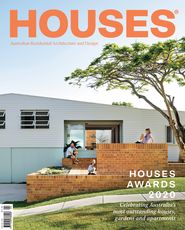
People
Published online: 30 Apr 2021
Words:
Katelin Butler
Images:
Andrew Cowen,
Anthony Browell,
Brett Boardman,
John Gollings,
Margaret Sixel,
Peter Bennetts,
Tom Ferguson
Issue
Houses, August 2020

